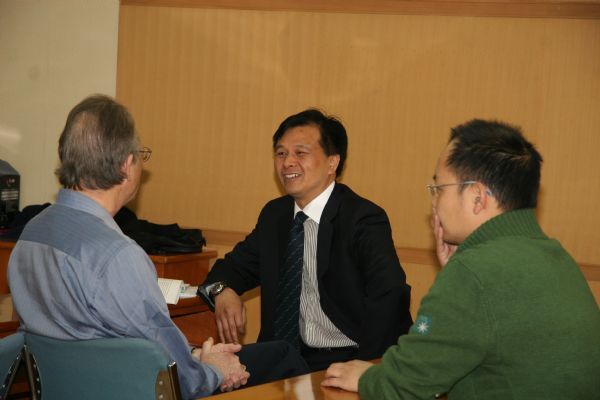
The well-known Physics Professor Stanley M. Flatte was invited to visit our institute on Mar. 29, 2007. Dr. Stanley gave us a report on "Underwater Ambient Noise: Characterization, Applications and Impacts". The seminar was anchored by Director Tian Jing Prof. Li Fenghua along with some researchers and students in our institute attended the seminar.
Dr. Stanley is a professor of Physics of U. California at Santa Cruz. His research interests include Numerical Simulation, Ocean Acoustics, Atmospheric Optics, and Seismology. He is also a member of American Physical Society (Fellow), Acoustical Society of America (Fellow), Optical Society of America (Fellow), Sigma Xi (President of the Santa Cruz Chapter, 1999-2000), American Association for the Advancement of Science (Fellow), and American Geophysical Union. He has published more than 100 journals and conference papers.
In his report, Dr. Stanley had a review of his research progress and results on ocean-acoustic work. He began his research in the mid-1970's with the insight that observed acoustic fluctuations of sound propagation in the ocean could be caused primarily by one particular ocean process: internal waves. The initial approaches to this problem involved extensions to geometrical optics approached through the path-integral technique.
In 1989, an even more detailed pulse-propagation experiment was carried out over a 1000-km propagation path. It was found that the path-integral theory was too approximate for this detailed experiment, so that supercomputer numerical simulation needed to be done with the specifics of the experimental location to show that very good agreement with internal-wave dominance could be obtained. The following figure shows the arrival structure of the pulse after having traveled 1000 km through the real ocean, as measured by a 3000-m-long vertical line of 50 hydrophones. Also shown are the predicted arrival structures from the simulations, both with and without internal waves. The simulation with internal waves fits very well to the real data, whereas the simulation without internal waves does not.
Dr. Stanley gave us a systematic and vivid introduction of his research, which was received with warm applause from the spectators. After the report, Dr. Stanley had a warm discussion with the audience.


|